| Chihuahua has an enormous orange metal sculpture to the
south. To the north it has another not quite but still 30 metres high. It
represents a synthesis of pre-Hispanic, European, Asian and Moslem elements.
It is called Árbol de la Vida (Tree of
Life) and is another Sebastián
construction. | 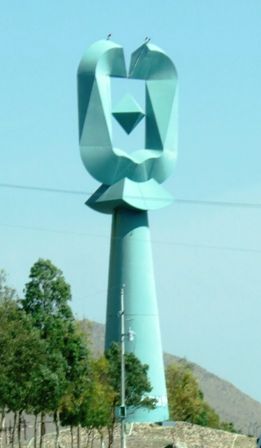 |
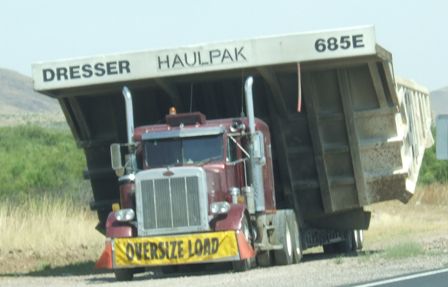 |
We headed north on the toll road. At the toll booth we passed two trucks
with loads like this. Unfortunately nobody had planned a way round the toll
booths. So they were busy taking down the fence presumably with the idea
that they could drive across the field and so get around the toll booth. |
| Such roads as these are interesting because although they
are toll roads they are not always what we expect of a motorway. This one is not
even dual carriageway. Consequently when you
find tractors cutting the grass verge you have to take care getting past.
This is quite like France! | 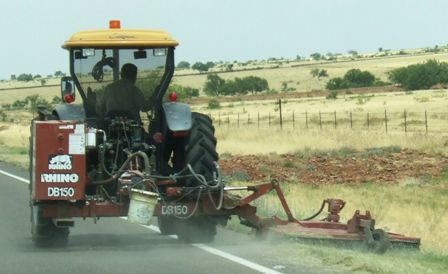 |
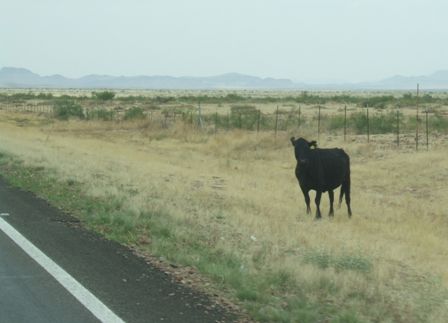 |
Not like France are the wandering animals. They are one of the reasons they
do not recommend that you drive at night in Mexico. Hitting an animal
this size can make a real mess of your car! |
| However the road is still straight and flat and goes
on for miles. There are no trees and few features to break the monotony. | 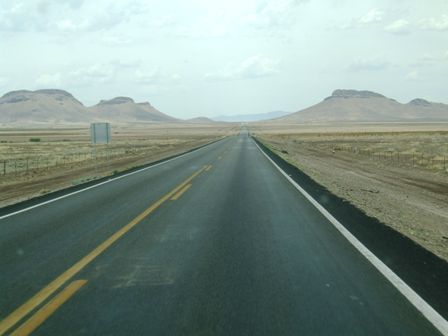 |
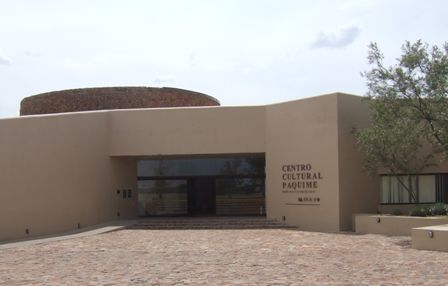 |
We bypassed the south of Nuevo Casas Grandes to old Casas Grandes which is
where the Paquimé archaeological site is. This
is the entrance and the museum building. |
| Inside the museum is a model of how they believed the
site once looked. Archaeologically it is very much a work in progress. It
is thought to have been a major trading settlement from around 900AD until
it was invaded and sacked, perhaps by the Apache, in 1340AD. | 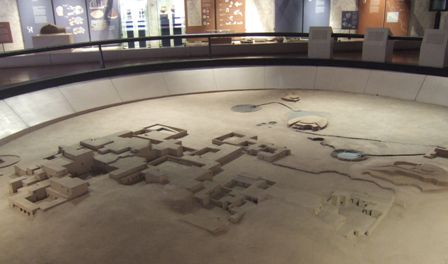 |
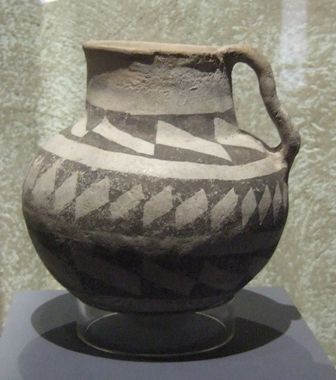 |
There are pots from the period mostly made using spirals of clay, a method
still used in the area today. |
| Some of the pottery is quite strange and full of
symbolic meaning like this person lying on his side. | 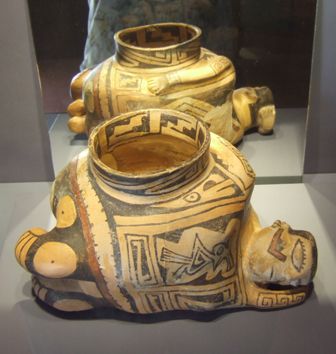 |
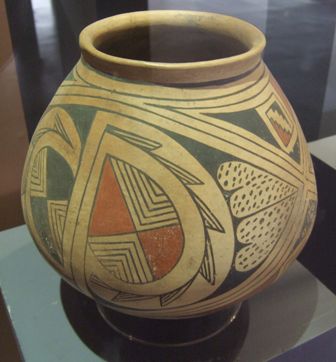 |
Although not as white as the modern pottery, the patterns are very similar
to the famous Mata Ortíz pottery made just down the road today. |
| Quite a number of the pieces have faces or animals
incorporated into them which was quite sophisticated for the time. | 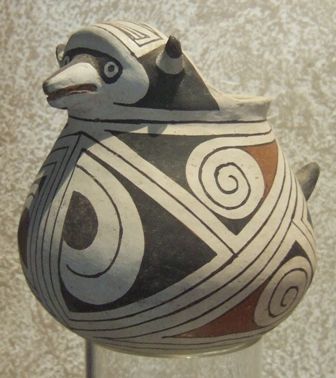 |
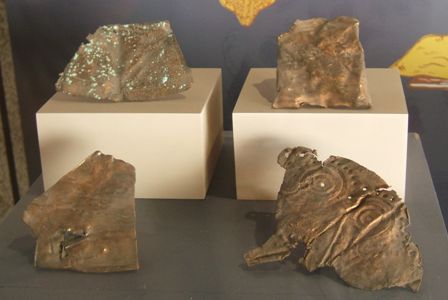 |
Besides pottery they also did a lot of work with copper. The whole of north
Mexico was, and still is, one of the richest sources of copper and other
metals in the world. |
| A painting showing a selection of symbols found in
various ruins from the period. | 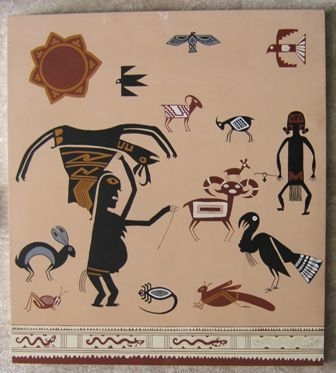 |
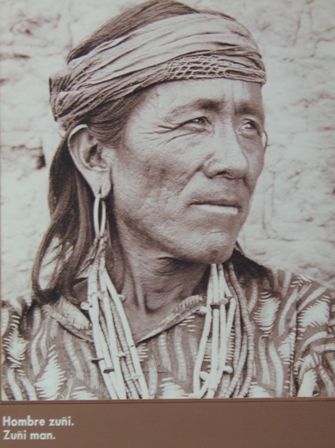 |
There are photographs of the native peoples who live in the area today, many of
whom can trace their existence here back to the ancient times. This
is a Zuñi man but there are also Navajo and Hopi. |
| Most of the buildings are of adobe construction and in
surprising good condition. We think that many of the stone walls have been
added as protection from the elements. | 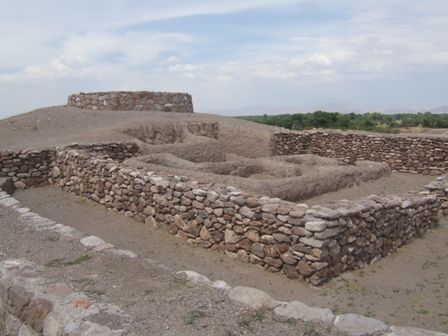 |
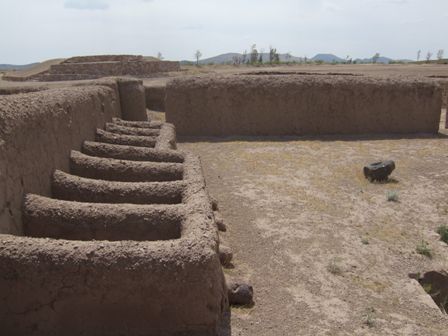 | .Excavation
and restoration began in the 1950s and is ongoing. Some of the areas
obviously had specialised uses which sometimes we can only guess at. However
there are indications that this was a kitchen area. |
| Not easy to see in the photograph but this was a
Pelota field with its characteristic I shape.. | 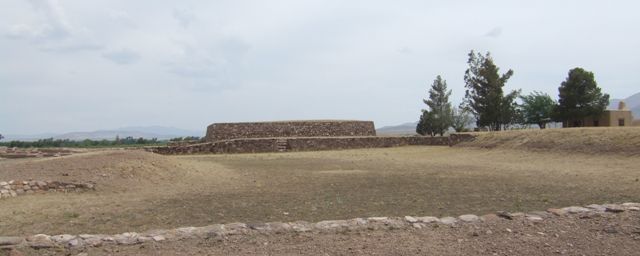 |
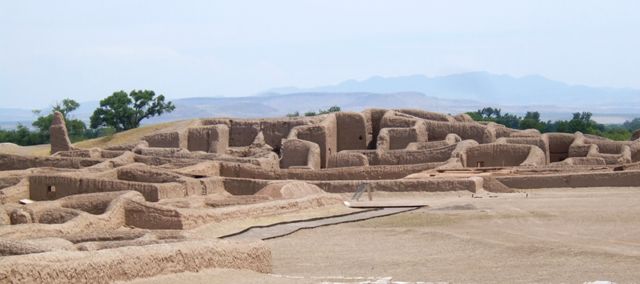 |
The maze-like shape is quite unique and makes this site instantly
recognisable. Note that most of the rooms are known to be underground. |
| To protect the fragile remains you cannot enter any of
the buildings any more. The doorways are very small and the windows even
smaller. | 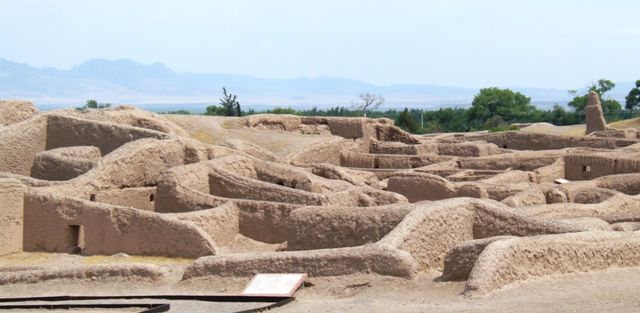 |
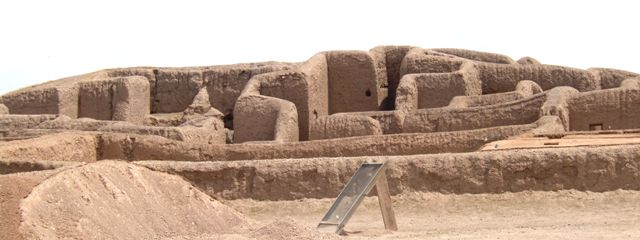 |
Many of the buildings had underground sources of water fed from a central
reservoir. Note the sieve and the pile of sand in the foreground where they
are still working.. |
| .Some of the areas are quite large. This is thought
to have been some form of government chamber. | 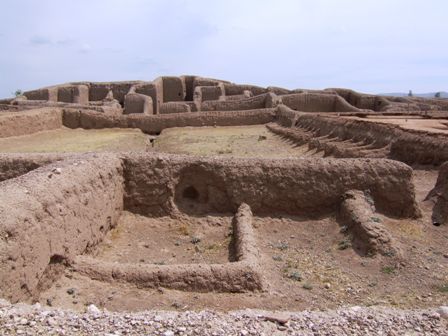 |
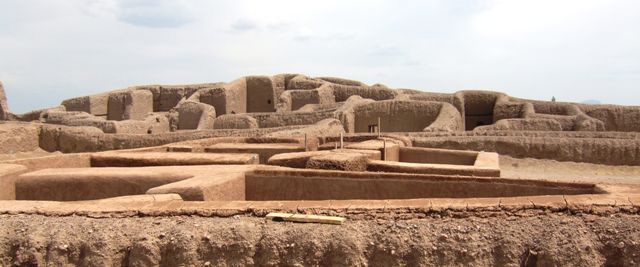 |
There were few other visitors but with temperatures in excess of 100˚F
that was somewhat understandable. Mad dogs and Englishmen....... |
|